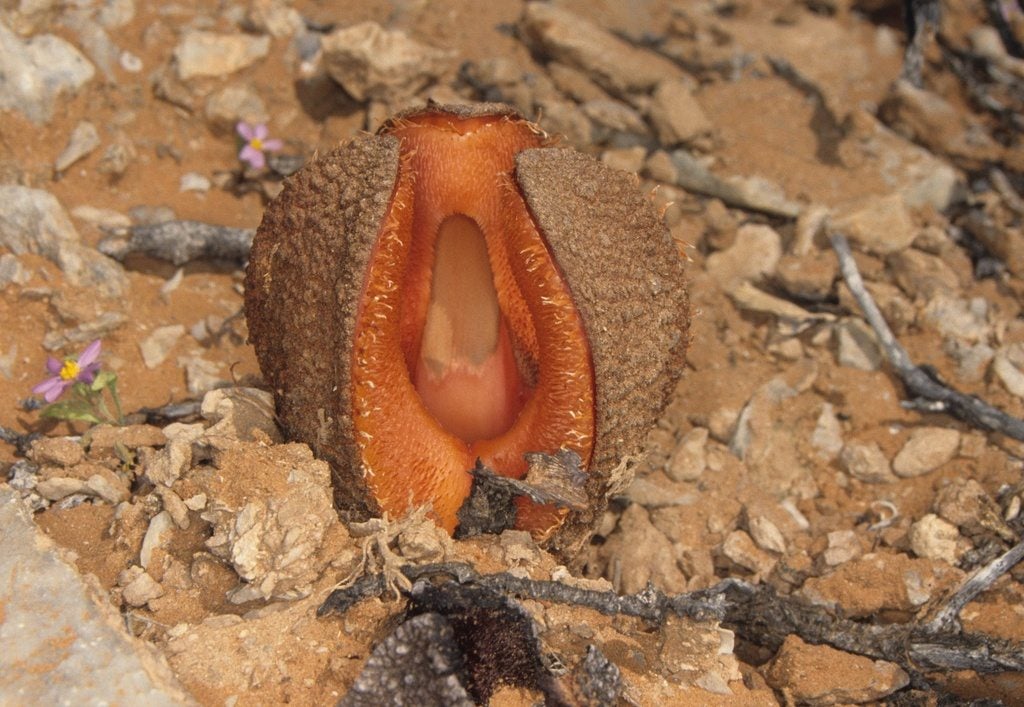Hydnora Africana Plant Info – What Is Hydnora Africana

Truly one of the more bizarre plants on our planet is the Hydnora africana plant. In some photos, it looks suspiciously akin to that talking plant in Little Shop of Horrors. I’m betting that’s where they got the idea for the costume design. So what is Hydnora africana and what other strange Hydnora africana info can we dig up? Let’s find out.
What is Hydnora Africana?
The first odd fact about Hydnora africana is that it is a parasitic plant. It doesn’t exist without its host members of the genus Euphorbia. It doesn’t look like any other plant you have seen; there are no stems or leaves. There is, however, a flower. Actually, the plant itself is a flower, more or less. The body of this oddity is not only leafless but brownish gray and devoid of chlorophyll. It has a fleshy look and feel, much like a fungus. As Hydnora africana flowers age, they darken to black. They have a system of thick rhizophores that intertwine with the root system of the host plant. This plant is only visible when the flowers push through the earth. Hydnora africana flowers are bisexual and develop underground. Initially, the flower is composed of three, thick lobes that are fused together. Inside the flower, the inner surface is a vibrant salmon to orange color. The exterior of the lobes is covered by many bristles. The plant may stay in stasis underground for many years until enough rain falls for it to emerge.
Hydnora Africana Info
Although the plant looks otherworldly, and, by the way, it smells pretty bad too, it apparently produces delicious fruit. The fruit is an underground berry with a thick, leathery skin and lots of seeds embedded in the jelly-like pulp. The fruit is called jackal food and is eaten by numerous animals as well as people. It is also extremely astringent and has even been used for tanning, preserving fishing nets, and treating acne in the form of face wash. Additionally, it’s purported to be medicinal, and infusions of the fruit have been used to treat dysentery, kidney, and bladder ailments.
Additional Facts About Hydnora Africana
The putrid odor serves to attract dung beetles and other insects that then become trapped within the flower walls due to the stiff bristles. The trapped insects drop down the flower tube onto the anthers where pollen adheres to its body. It then falls farther down onto the stigma, a very clever method of pollinating. Chances are good you have never seen H. africana as it is found, as its name implies, in Africa from the western coast of Namibia southwards to the Cape and north through Swaziland, Botswana, KwaZulu-Natal, and into Ethiopia. Its genus name Hydnora is taken from the Greek word “hydnon,” meaning fungus-like.
Sign up for the Gardening Know How newsletter today and receive a free copy of our e-book "How to Grow Delicious Tomatoes".

Amy Grant has been gardening for 30 years and writing for 15. A professional chef and caterer, Amy's area of expertise is culinary gardening.
